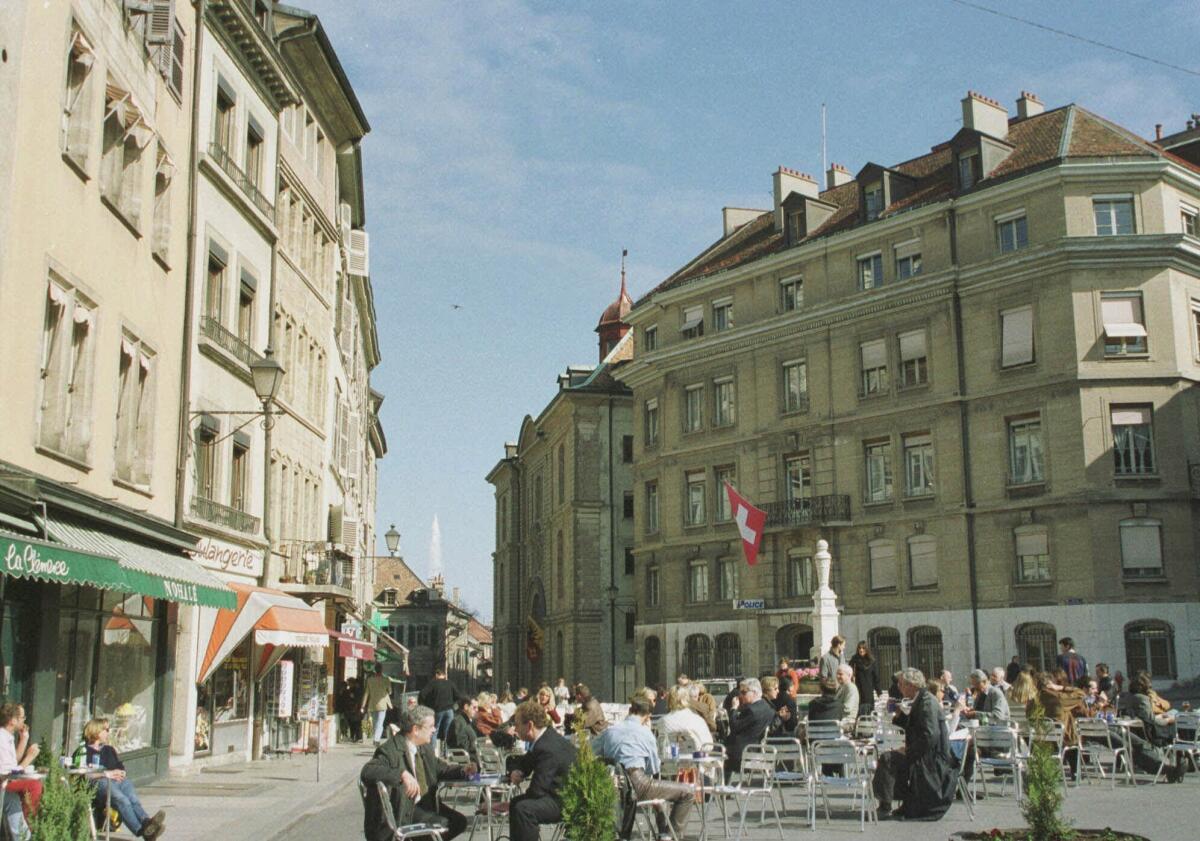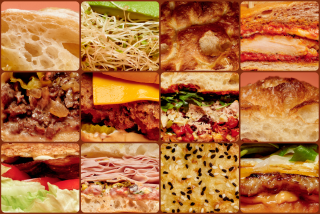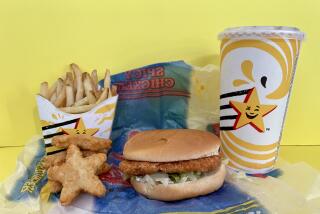Here’s an easy way to budget for your food costs on your next trip

According to the Club Sandwich Index, Geneva is the city with the highest overall total meal cost, at $87 a day.
- Share via
If you’ve seen this headline — “Geneva Is the Most Expensive City in the World for Dining Prices” — it’s probably based on the recently released Club Sandwich Index, or CSI, compiled by Hotels.com.
The index, which can be found at www.lat.ms/1KpEtap, compares the price of a conventional club sandwich in 28 major cities. Among other tidbits, it tells you that the average price of one worldwide is $16.43. Some cities are way above average (Geneva at $30.50) and others way below (Mexico City at $9.77).
The complete data compilation also includes prices of a burger meal, a cup of coffee and a glass of house wine, summed up for a total daily expenditure.
Now you probably wouldn’t base your trip on these results, but they do provide a good barometer for budgeting.
SIGN UP for the free In the Loop theme parks newsletter >>
Economists regularly compare living costs around the world by calculating local prices for a standardized market basket of items, converting currencies as necessary. For travelers’ meals, Hotels.com used a market basket of menu items in hotels.
Among the results:
• The city with the highest overall total meal cost, converted to U.S. dollars, is Geneva, at $87 a day, followed by Paris at $73, Hong Kong at $71, Oslo at $68, London and Seoul at $65, Stockholm at $62, Tokyo and Singapore at $61, and New York at $60.
No real surprises there. Europe generally ranges from $42 to $49 a day, slightly higher in Scandinavia.
• At the other end of the scale, the cities with daily costs of less than $40 are Bogotá, Colombia, at $30; Mexico City at $32; Rio de Janeiro at $34; and Madrid at $39.
• The pattern for club sandwiches generally follows total costs, but coffee and wine prices are inconsistent. For instance, Seoul tops the coffee price list at $9.72, but other Asian cities — Tokyo, Hong Kong, Beijing and Taipei — outprice Geneva on a cuppa joe.
Paris shows the highest wine prices at $13 a glass, but India is close at $12.61 (but ranks 20th on the list of total costs). The least expensive glasses, less than $7, are found in Spain, Amsterdam, Bogotá, Mexico City, Berlin and Buenos Aires.
The actual daily cost can vary widely, of course, depending on your travel style.
Budget travelers can eat for a lot less by avoiding hotel restaurants. And too, the index is based on big-city prices, so if you’re traveling in outlying areas, you often can eat for a lot less. Another budget saver: Skip high-priced drinks — coffee, for example — and switch to the local beverages of choice.
The Club Sandwich Index isn’t the only worldwide meal cost comparison. For years, the Economist has compiled relative prices for a Big Mac, probably the most standardized food item available almost everywhere in the world. You can find this year’s burgernomics (the Economist’s term) at www.economist.com/content/big-mac-index.
The Economist uses the index mainly to examine currency values rather than as a tourist cost guide, but the Big Mac Index is often used for tourists too. The Big Mac data cover more than twice as many locations as the Club Sandwich.
There are some differences between the two indexes: Yes, Switzerland tops the Big Mac cost too ($7.54), and Norway and Sweden are also near the top. But Hong Kong, No. 3 in club sandwiches, drops to a near-bottom 26th for the Big Mac, and Tokyo drops to No. 22.
Use these as a planning tool, and start thinking about picking up items from the grocery (picnics can be fun and budget saving), eating your largest meal of the day at midday, when prices are sometimes less, checking out fixed-price menus and wandering off the beaten tourist path to more modest restaurants.
More to Read
Sign up for The Wild
We’ll help you find the best places to hike, bike and run, as well as the perfect silent spots for meditation and yoga.
You may occasionally receive promotional content from the Los Angeles Times.






